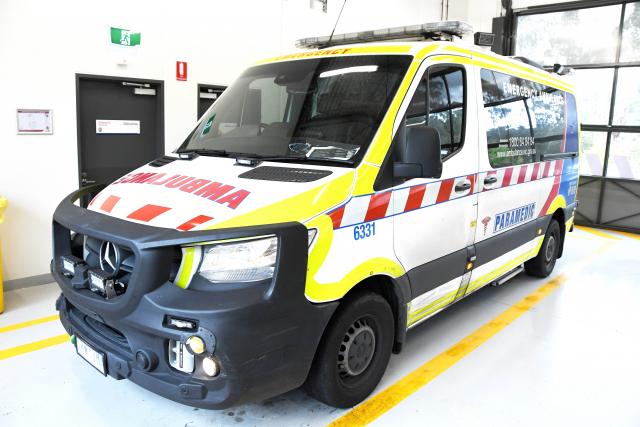
By Mikayla van Loon
Ambulance Victoria’s (AV) response times in the Yarra Ranges have worsened, a trend occurring across the state as Code 1 cases reached a yearly high.
The quarterly data from 1 April to 30 June this year showed the average response time in the Yarra Ranges had blown out to 18 minutes and 10 seconds, three minutes more than the state-wide target of 15 minutes.
Only 49.7 per cent of the Code 1 jobs hit the target of 15 minutes or less, a 6.1 per cent decline from the previous quarter and 14.5 per cent below the state average of 64.2 per cent.
The Yarra Ranges recorded a total of 2141 Code 1 responses, while the state saw a sharp increase with 102,416 cases needing lights and sirens, 5932 more than the previous quarter.
In the metropolitan region as a whole, paramedics responded to 71,906 Code 1 emergencies.
AV metropolitan regional director Michael Georgiou said demand across the metropolitan region increased by 5.3 per cent – or 3644 more Code 1 cases – compared with a year ago.
“The entire health system continues to be extremely busy due to seasonal illness such as flu, Covid-19 and RSV circulating within our communities and our workforce,” Mr Georgiou said.
“Our dedicated paramedics and first responders across Melbourne’s suburbs do an incredible job in the face of record-breaking demand, providing best care to our communities every day.”
The closest neighbouring local government areas (LGA) to see improvement compared to last year were Maroondah (one minute and 15 seconds faster) and Nillumbik (52 seconds faster).
Cardinia’s response time also increased to over 18 minutes, having previously sat around 16 to 17 minutes.
Over in Knox, the response time still fell within the desired timeframe but increased to 14.57 from a previous 13.45.
Code 2 responses also extended despite less cases being logged across Victoria, totalling 50,576, a drop from 53,565 in the previous quarter.
In the Yarra Ranges this increased from 39.33 minutes to 44.15; in Cardinia, it went up from 39.03 minutes to 45.56; Knox saw a rise from 40.47 to 44.16; and in Maroondah from 41.30 minutes to 46.01.
Victorian Ambulance Union secretary Danny Hill said it was unacceptable that a third of emergency patients, whether it be for heart attacks, strokes, car accidents or cardiac arrests, were waiting too long state-wide for an ambulance.
“No paramedic in Victoria will be surprised by the latest response time data. The entire workforce has been screaming ‘iceberg right ahead’, and now the ship is sinking,” he said.
“Paramedics are spending more time ramped at hospital, more time being sent to trivial cases and less time responding to genuine emergency patients.
“AV is an emergency service. That’s what taxpayers pay for. But the workforce feel that the current AV Executive are taking AV in a different direction and patients are suffering, which is why so many paramedics are calling for the Government to take action.”
Mr Georgiou and fellow metropolitan regional director Vanessa Gorman urged people to use alternative care pathways when they needed timely medical treatment but it was not an emergency.
“It is important that everyone does their part. If your matter is not an emergency, consider using alternative care options like Primary Priority Care Centres (PPCC) or the Victorian Virtual Emergency Department (VVED) and keep our highly skilled paramedics available for patients most in need,” Mr Georgiou said.
“You can connect directly with the Victorian Virtual Emergency Department (VVED) at www.vved.org.au anywhere, anytime in the comfort of home and avoid a trip to hospital,” Ms Gorman said.
At least one in five calls to Triple Zero (000) do not need an emergency ambulance response.
“From April to June, 41,704 people who did not need an emergency ambulance were instead connected to more appropriate care by paramedics and nurses in AV’s Secondary Triage team,” Ms Gorman said.
For more information about routine winter vaccinations or finding your nearest PPCC, visit the Better Health website at www.betterhealth.vic.gov.au






